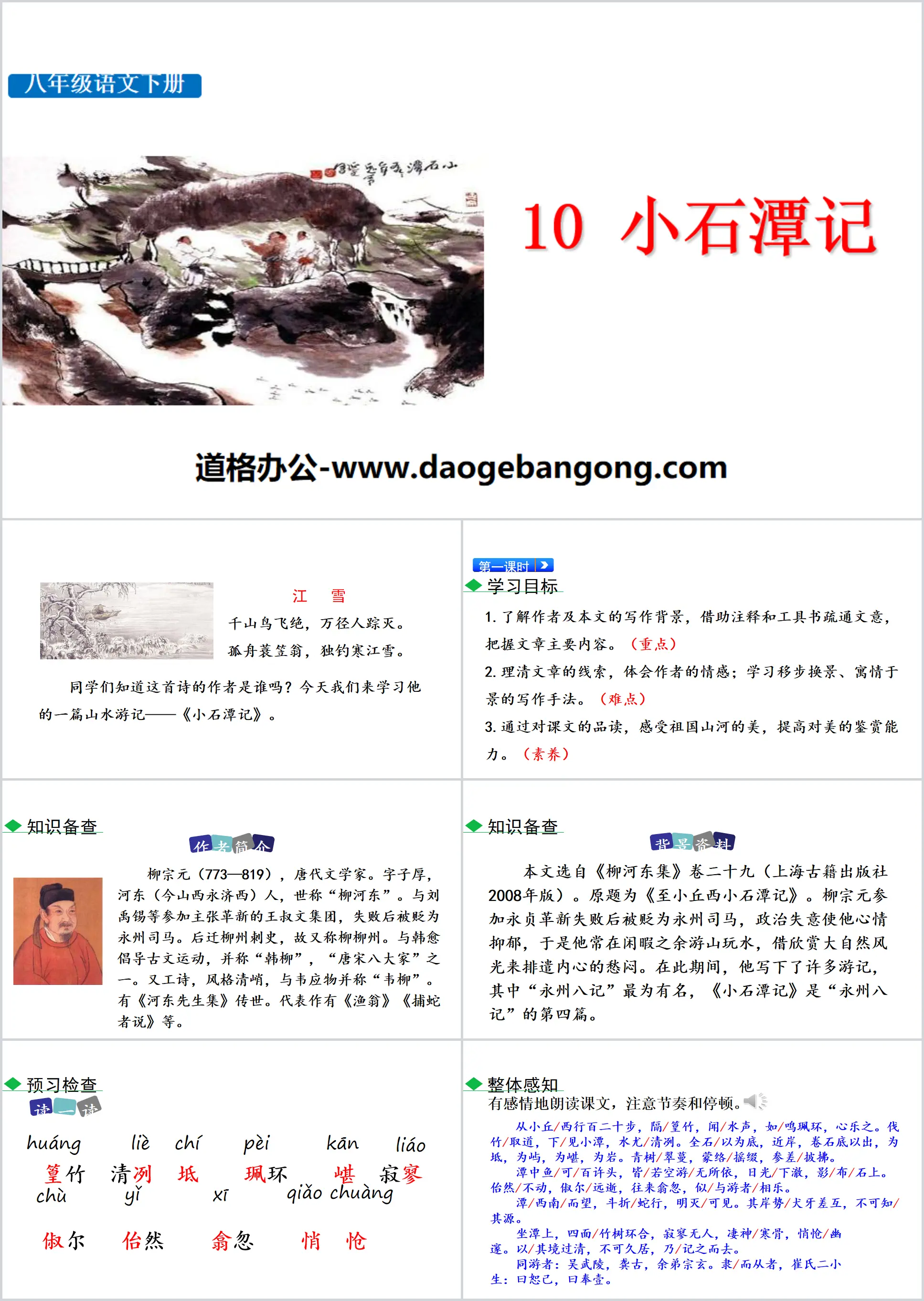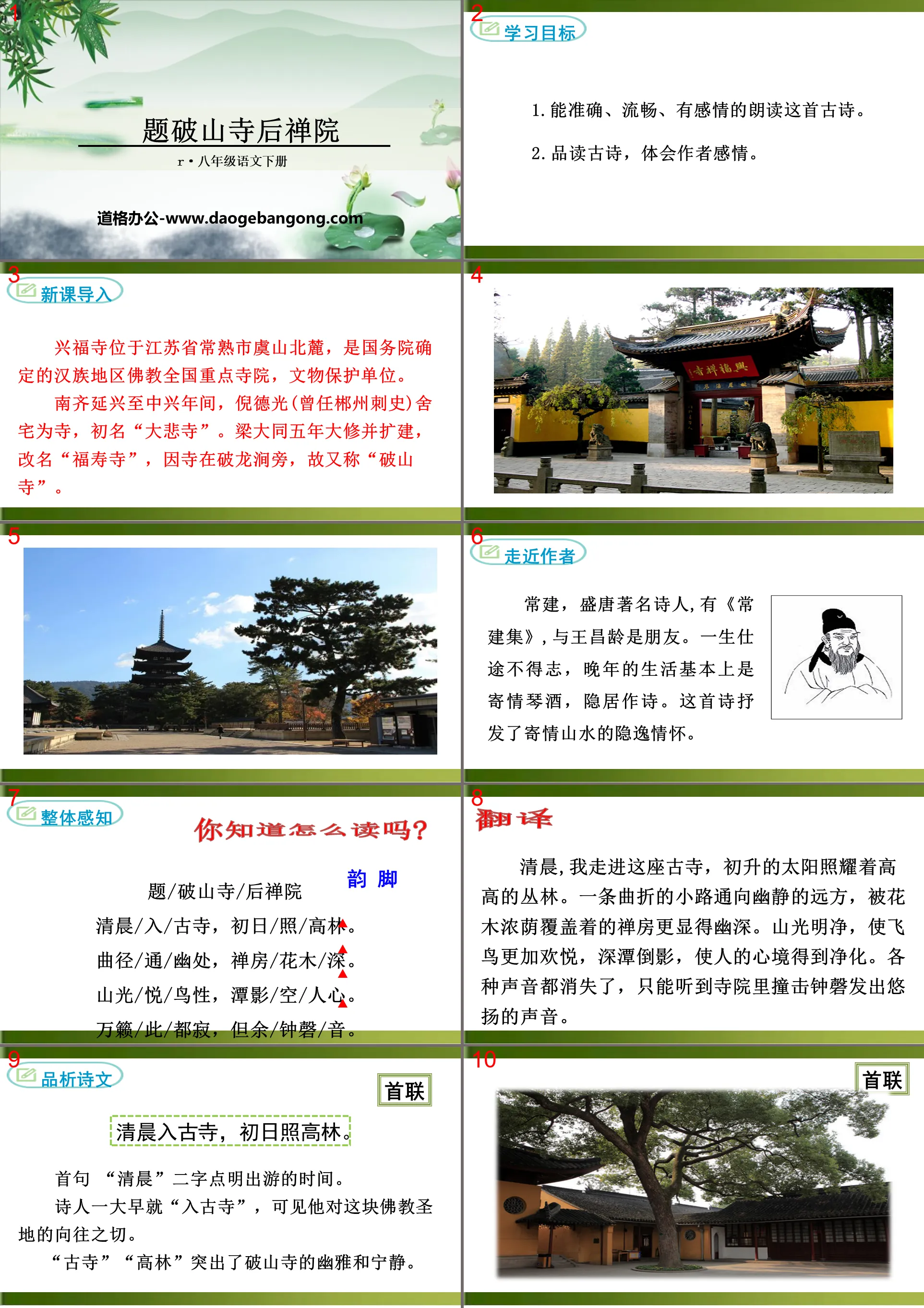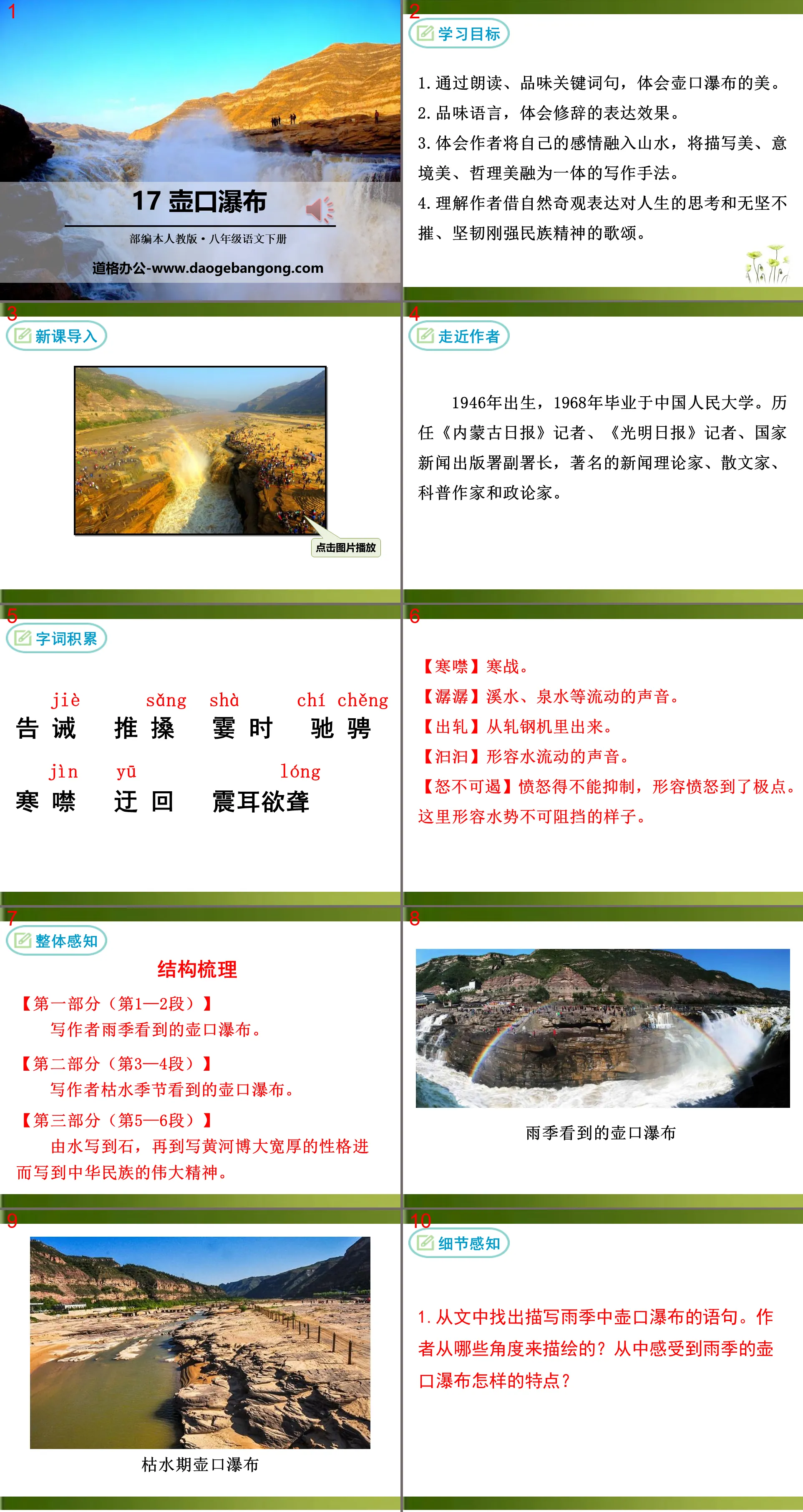"The Story of Little Rock Pond" PPT quality courseware Simple campus recruitment activity planning plan summary enterprise and institution recruitment publicity lecture PPT template is a general PPT template for business post competition provided by the manuscript PPT, simple campus recruitment activity planning plan summary enterprise and institution recruitment promotion Lecture PPT template, you can edit and modify the text and pictures in the source file by downloading the source file. If you want more exquisite business PPT templates, you can come to grid resource. Doug resource PPT, massive PPT template slide material download, we only make high-quality PPT templates!
| 文件名 如何下载使用 | 下载次数 | Download Points | 下载地址 |
|---|---|---|---|
| "The Story of Little Roc... | 23825次 | 0.00 | Free Download |
Tips: If you open the template and feel that it is not suitable for all your needs, you can search for related content "The Story of Little Rock Pond" PPT quality courseware is enough.
How to use the Windows system template
Directly decompress the file and use it with office or wps
How to use the Mac system template
Directly decompress the file and use it Office or wps can be used
Related reading
For more detailed PPT-related tutorials and font tutorials, you can view: Click to see
How to create a high-quality technological sense PPT? 4 ways to share the bottom of the box
Notice
Do not download in WeChat, Zhihu, QQ, built-in browsers, please use mobile browsers to download! If you are a mobile phone user, please download it on your computer!
1. The manuscript PPT is only for study and reference, please delete it 24 hours after downloading.
2. If the resource involves your legitimate rights and interests, delete it immediately.
3. Contact information: service@daogebangong.com
"The Story of Little Rock Pond" PPT quality courseware, due to usage restrictions, it is only for personal study and reference use. For commercial use, please go to the relevant official website for authorization.
(Personal non-commercial use refers to the use of this font to complete the display of personal works, including but not limited to the design of personal papers, resumes, etc.)

Related reading
For more detailed PPT-related tutorials and font tutorials, you can view:Please click to see










Authoritative PPT Summary
"The Story of Little Rock Pond" PPT quality courseware
Part One: First Lesson
learning target
1. Understand the author and the writing background of this article, use notes and reference books to clarify the meaning of the text, and grasp the main content of the article. (emphasis)
2. Sort out the clues of the article and understand the author's emotions; learn the writing techniques of changing scenes step by step and embodying emotions in the scenes. (difficulty)
3. Through reading the text, you can feel the beauty of the mountains and rivers of the motherland and improve your appreciation of beauty. (literacy)
Knowledge for future reference
About the Author
Liu Zongyuan (773-819), a writer in the Tang Dynasty. Zihou was born in Hedong (today's west of Yongji, Shanxi Province), and was known as "Liu Hedong" in the world. Together with Liu Yuxi and others, he joined the Wang Shuwen Group that advocated reform. After the failure, he was demoted to Yongzhou Sima. Later, he moved to Liuzhou to be the governor, so it was also called Liuliuzhou. He and Han Yu initiated the ancient prose movement, and were known as "Han Liu" and one of the "Eight Great Masters of Tang and Song Dynasties". He also wrote Gong poetry with a clear style, and was called "Wei Liu" together with Wei Yingwu. There is "Collection of Mr. Hedong" handed down from generation to generation. His representative works include "The Fisherman" and "Snake Catcher" etc.
Background information
This article is selected from Volume 29 of "Liuhe East Collection" (Shanghai Ancient Books Publishing House, 2008 edition). The original title was "A Journey to Xiaoshitan in the West of Xiaoqiu". After Liu Zongyuan failed to participate in the Yongzhen Revolution, he was demoted to Yongzhou Sima. His political frustration made him depressed, so he often traveled around in his spare time and enjoyed the natural scenery to relieve his inner depression. During this period, he wrote many travel notes, among which "Eight Notes of Yongzhou" is the most famous. "Xiao Shitan Note" is the fourth chapter of "Eight Notes of Yongzhou".
preview check
read it
Bamboo, clear, dim, ring, lonely
�er, suddenly, silently, sadly
overall perception
Read the text emotionally, paying attention to rhythm and pauses.
Walking a hundred and twenty steps west from the hillock, across the bamboo poles, you can hear the sound of water, like a ring of water, and feel happy about it. After cutting bamboo, we took the road and saw a small pool. The water was extremely clear. The whole stone is considered to be the bottom, and when it is near the shore, the stone is rolled up from the bottom to form a dip, an islet, a ridge, and a rock. Green trees/emerald vines, covered with network/shaking, staggered/draped.
There are hundreds of fish in the pond, all of them seem to be swimming in the sky and have nothing to rely on. The sunlight is clear and shadows are spread on the rocks. �Ran/not moving, �er/passing away, coming and going suddenly, as if/rejoicing/with the tourists.
Looking to the southwest of the pool, the fighting folds/snake, the brightness and extinction/can be seen. The shore situation/canine teeth are different from each other, and its source is unknown.
Sitting on the pool, surrounded by bamboo trees on all sides, it was so lonely and no one else, I felt desolate, desolate and desolate. Because the area was too clear, he couldn't stay there for a long time, so he left it in memory.
Travelers with him: Wu Wuling, Gong Gu, Yu Di Zongxuan. Those who are subordinates/followers are Cui's Erxiaosheng: one is called "forgive yourself" and the other is "fengyi".
Translation: Walking a hundred and twenty steps west from the hill, I heard the sound of water through a bamboo forest, like the sound of jade pendants and yuhuans touching each other, and I really liked it. After cutting down the bamboo and clearing the road, you can see a small pool going down, the water is particularly clear and transparent. (Tan) The bottom of the pool is formed by a whole piece of stone. Near the shore, some parts of the bottom of the stone roll over to expose the water, forming various shapes such as small reefs, small islands, and small rocks. Green trees and green vines cover, twine, sway, and are connected, unevenly, and drifting in the wind.
Translation: There are about a hundred fish in the stone pool, and they all seem to be swimming in the air with nothing to rely on. The sun shines down to the bottom of the water, and the shadow (of the fish) is imprinted on the stone, motionless. Suddenly it swam far away, coming and going, briskly and quickly, as if it was amusing the tourists.
Translation: Looking to the southwest of Shitan, (the stream) is as winding as the Big Dipper, and (the water flow) is as curved as a long snake crawling. Some places are exposed, and some places are submerged. It can be vaguely seen. The shape of the stone bank is like a dog's teeth intertwined with each other, making it impossible to know the source of the stream.
Read and study carefully
What precise verbs did the author use when writing about the discovery of Xiaoshitan? What are the pros of writing in this manner? What is the author’s inner emotion reflected in “Bamboo Cutting”?
I can hear the sound of water across a bamboo fence, like a ring of sound, and I feel very happy about it. After cutting bamboo, we took the road and saw a small pool at the bottom. The water was particularly clear.
These verbs show the author's strong interest in traveling and also imply that Xiaoshitan is located in a quiet and secluded place that is inaccessible to people.
What is the overall picture of Xiaoshitan?
The whole stone is considered to be the bottom, and when it is near the shore, the bottom of the stone is rolled up to form a dip, an islet, a rock, and a rock. Green trees and green vines are covered with swaying winds, scattered and scattered.
What are the characteristics of the fish swimming in the pond? How did the author describe it? What feelings does this description show the author?
There are hundreds of fish in the pond, all of them seem to be swimming in the sky with no support. The sunlight is clear and shadows are spread on the rocks. Although it is motionless, it disappears far away, coming and going suddenly, as if enjoying itself with tourists.
First, write down the number of fish and the state of "swimming in the air without any support", and then take a close-up to reflect the agility of the swimming fish and the author's strong interest in enjoying the scenery. The method of combining movement and stillness combines the static description of sunlight and fish shadows with the dynamic description of fish "passing away" and "coming and going". It deeply understands the principles of movement and stillness, and is able to convey the spirit vividly and outline a lively picture of swimming fish.
What is the beauty of the sentence "It seems to be enjoying the pleasure of wandering"?
Based on the scene and emotion, this group of cute and lively little fish seem to deliberately tease tourists and share the joy of mountains and rivers with them. This sentence uses the freedom of the little fish to compare people's mood, which is more straightforward than ordinary sentences. The cheerfulness of his own mood is more meaningful, leaving room for the reader's imagination.
PPT about Little Rock Pond, Part 2: Second Lesson
Students, while feeling the author's "quiet melancholy and profoundness", are you impressed by his beautiful language and unique writing techniques? In this lesson, we will continue to taste "The Story of Little Rock Pond"!
collaborative inquiry
This article contains emotions in the description of the scenery. Please analyze the ups and downs of the author's emotions.
The first level of emotion: separated by bamboo → hearing the sound of water → inner "joy"
The second level of emotion: cutting bamboo on the road → going down to see a small pool → clear water, strange rocks, and lush trees → inner joy → swimming fish (free and carefree), so I feel that the fish "seem to be enjoying themselves with the tourists"
The third level of emotion: looking southwest → the water flow is winding and deep → either bright or dark → the deep and unfathomable inner feeling → lonely and desolate → lonely and desolate state of mind → the environment is too clear and cannot be stayed for a long time → The desolate mood of being banished to the wilderness for a long time is all in it
There were five people traveling with the author. Why does it say "lonely and no one" in paragraph 4?
First, this feeling is related to the author's state of mind at the time. The external scenes secretly coincided with and interacted with the author's long-term suppressed mood after being demoted, so the author was immersed in a lonely and uninhabited state of mind.
Secondly, the "no one" here does not mean that there is really no one, but emphasizes the loneliness of the environment and the loneliness of the heart. The five people traveling with him were all relatives and friends of Liu Zongyuan, and they had also experienced blows and hardships. For example, Wu Wuling was also demoted to Yongzhou, Cui's second son was the son of Liu Zongyuan's brother-in-law Cui Jian, and Cui Jian also experienced exile. Therefore, these few people's hearts are in harmony, and they are all frustrated and lonely.
Class summary
Summarize the topic
This article is a landscape travelogue. The author captures the characteristics of the scenery to describe Xiaoshitan vividly and meticulously, deliberately exaggerating the quiet and beautiful environment of Xiaoshitan, and expressing his sadness and melancholy when he lived in exile.
Insights after learning
Impression 1: The scenery of Xiaoshitan is beautiful and moving. I wonder if it is still the same now. If it is still the same, if it is developed into a tourist attraction, it will bring beauty and enjoyment to more people.
Impression 2: "The Story of Little Rock Pond" is a "picture of meditation", which is fixed on the edge of the bamboo forest pond. The author observes quietly, enjoying each other. In fact, it is a cup of bitter tea, with the fragrance at the front and the bitterness at the back.
Writing features
❶Change the scene as you move.
The author leads us to experience various different scenery in the changing steps, which has a strong sense of dynamic picture. From the hill to the bamboos, from the bamboos to the sound of water, and then to the small pool through the sound of water, the story of the discovery of the small pool is full of suspense and curiosity, and gradually unfolds a wonderful story in front of people. picture.
❷Describe the scene with fine detail and vividness.
This article uses a variety of methods to describe scenes, leaving a deep impression on readers. For example, Xiaoshitan is described from multiple perspectives such as hearing, vision and touch.
"When you hear the sound of water, it's like a ring, and your heart is happy." As soon as you start writing, you can hear the sound and feel it.
"The water is especially clear" describes the clearness and coolness of the pool water from both visual and tactile perspectives. "Green trees and green vines", "clear under the sunlight, shadows on the rocks", "brightness and dimming visible", the color of the scenery and the light and dark changes in light are real and beautiful.
❸The writing method blends the scenes.
For example, "Sitting on the pool...can't stay for a long time, but remember it and leave", readers can't help but sympathize with the author while appreciating the beauty of the painting. This is the appeal of art. Another example is when writing about the first discovery of a small stone pool. First, he said that the sound of the water was "like a ring of sound, which made his heart happy", and then he wrote that the swimming fish "seemed to be enjoying themselves with the tourists", which imbued the scenery with human emotions and created a more vivid scene. A vivid and moving realm.
Classroom testing
1. Which of the following sentences has an incorrect interpretation of the underlined word ()
A. The joy of the heart (happiness) B. The source of which cannot be known (referring to the stream)
C. Make it clear (because) D. Remember it and leave (therefore, just)
2. In the following sentences, one of the underlined words without the phenomenon of inflection of parts of speech is ()
A. Go west from Xiaoqiu B. Don’t stay there for a long time
C. Desolate God and Cold Bones D. Looking southwest of the pond
3. Which of the following sentences is incorrectly divided into reading rhythms ()
A. The shore situation/canine tooth difference is different from each other
B.Xiamen/Xiaotan, the water/is particularly clear
C.Like you/wanderer/xiangle
D. Because / its territory / is too clear, you cannot / live for a long time
Homework
After studying "The Story of Little Rock Pond", write an essay.
Keywords: Free download of PPT courseware for the second volume of eighth-grade Chinese published by the People's Education Press, PPT download of "Little Rock Pond", in .PPT format;
For more information about the PPT courseware of "The Story of Little Rock Pond", please click the PPT tab of "The Story of Little Rock Pond".
"Little Rock Pond" PPT courseware download:
"Little Rock Pond" PPT courseware download Part One: Thinking and Research 1. This is a short and beautiful travel note. Read the text carefully, sort out the clues of the travel notes, and then recite the text. 2. This article contains emotions in the description of the scenery. When reading, we can feel the author...
"The Story of Little Rock Pond" PPT quality courseware:
"The Story of Little Rock Pond" PPT high-quality courseware Part One: Learning Objectives 1. Clear the meaning of the text and gain an overall understanding of the text content. 2. Summarize the characteristics of Xiaoshitan by deliberating, pondering, and tasting the words and sentences in the article. Master the method of grasping the characteristics of scenery and describing them in detail,...
"The Story of Little Rock Pond" PPT teaching courseware:
"The Story of Little Rock Pond" PPT teaching courseware Part One: Target Navigation 1. Combine the annotations and reference books to clarify the meaning of the text and accumulate classical Chinese words. 2. Learn how to write lyrically through scenes, and improve your aesthetic taste. 3. Understand the author’s lonely and sad mood during his relegation.